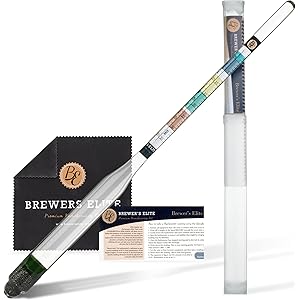Understanding Ale Yeast Flocculation
Flocculation is a critical process in fermentation, particularly in brewing ale. It refers to the clumping together of yeast cells, which can significantly impact the clarity and flavor of the final product. The question of whether ale yeast flocculates at the top or bottom of the fermentation tank is essential for brewers to understand, as it influences the efficiency of the fermentation process and the quality of the beer produced.
Flocculation Dynamics in Fermentation Tanks
Ale yeast, particularly strains like Saccharomyces cerevisiae, exhibits varying flocculation behavior based on several factors, including yeast strain, fermentation conditions, and the specific gravity of the wort. Generally, ale yeast tends to flocculate towards the bottom of the fermentation tank. This behavior is influenced by the yeast’s density and the gravitational forces acting on the yeast cells during fermentation.
Factors Influencing Yeast Flocculation
Several factors can affect the flocculation of ale yeast. These include the yeast strain used, the temperature of fermentation, and the presence of certain compounds in the wort, such as proteins and polyphenols. Some yeast strains are known for their high flocculation rates, while others may remain suspended in the wort for longer periods. Understanding these factors is crucial for brewers aiming to optimize their fermentation process.
Top vs. Bottom Flocculation
While ale yeast typically flocculates at the bottom of the fermentation tank, some conditions may lead to a phenomenon known as “top cropping.” This occurs when yeast cells rise to the surface, forming a thick layer of yeast on top of the beer. This can happen in specific fermentation conditions, such as when the yeast is under-pitched or when fermentation temperatures are too high. However, this is less common in traditional ale brewing.
The Role of Temperature in Flocculation
Temperature plays a significant role in the flocculation behavior of ale yeast. Higher fermentation temperatures can lead to increased yeast activity, which may cause yeast to remain suspended longer. Conversely, cooler temperatures can promote flocculation, causing yeast to settle at the bottom of the tank more quickly. Brewers must carefully monitor fermentation temperatures to achieve the desired flocculation and clarity in their beer.
Get more content like this!
Sign up to receive updates and new terms first hand.
Impact of Wort Composition on Flocculation
The composition of the wort, including its sugar content, protein levels, and pH, can significantly influence yeast flocculation. High levels of certain proteins can promote flocculation by providing a matrix for yeast cells to adhere to. Additionally, the presence of polyphenols can also affect yeast behavior, potentially leading to either enhanced or reduced flocculation depending on the specific interactions occurring within the wort.
Yeast Management Practices
Effective yeast management is crucial for achieving optimal flocculation in ale brewing. This includes proper pitching rates, temperature control, and monitoring fermentation progress. Brewers often use techniques such as rousing the yeast or adjusting fermentation conditions to encourage desired flocculation patterns. Understanding how to manipulate these variables can lead to improved beer quality and consistency.
Benefits of Proper Flocculation
Proper flocculation of ale yeast can lead to several benefits in the brewing process. It helps in achieving a clearer beer by allowing yeast to settle out of the liquid, reducing the need for additional filtration. Furthermore, effective flocculation can enhance the overall flavor profile of the beer by allowing for a cleaner fermentation process, minimizing off-flavors that can arise from prolonged yeast contact with the beer.
Conclusion on Flocculation Behavior
In summary, while ale yeast primarily flocculates at the bottom of the fermentation tank, various factors can influence this behavior. Understanding the dynamics of yeast flocculation is essential for brewers looking to optimize their fermentation processes and produce high-quality ale. By managing fermentation conditions and yeast health, brewers can achieve the desired clarity and flavor in their final product.




